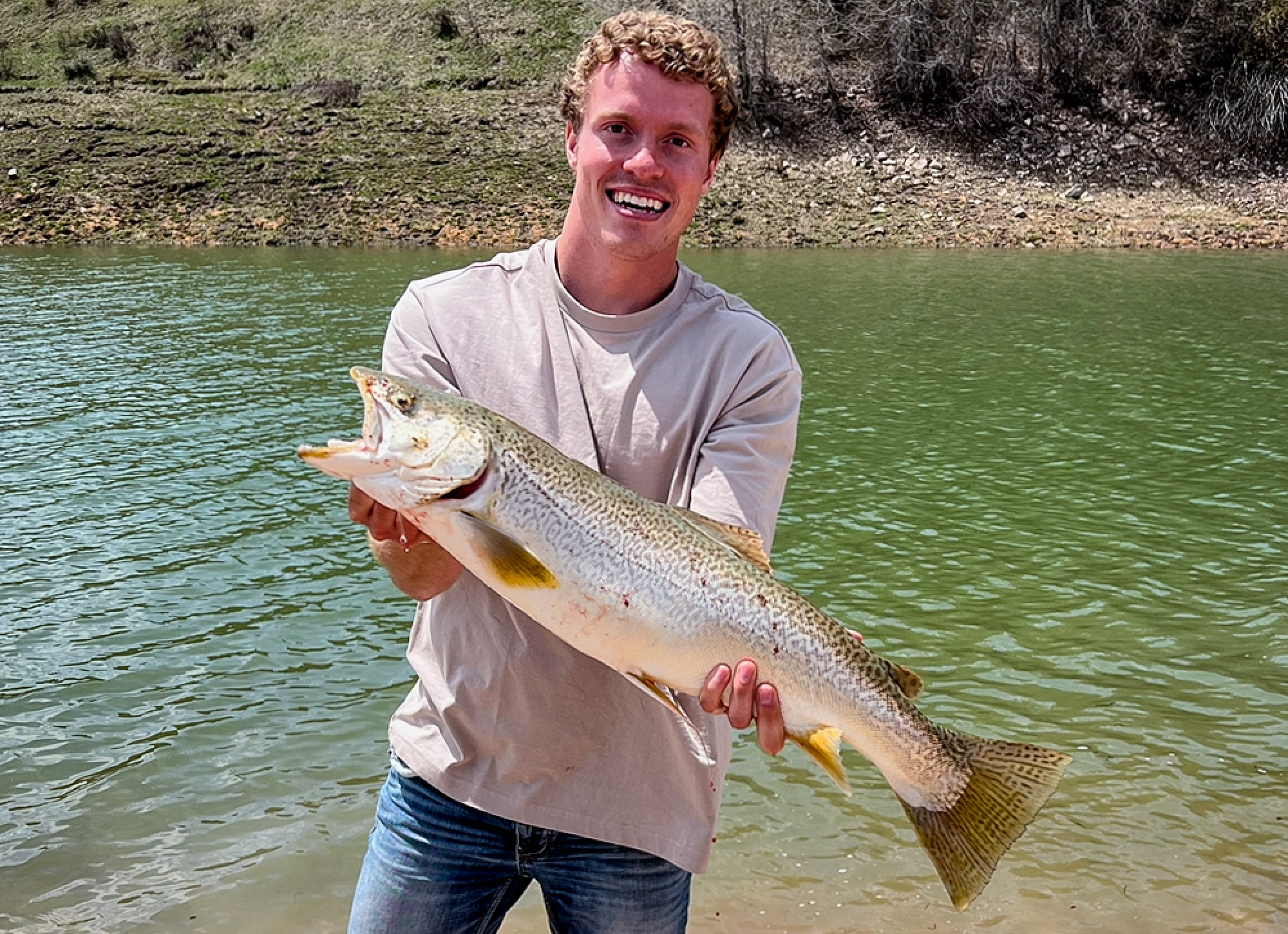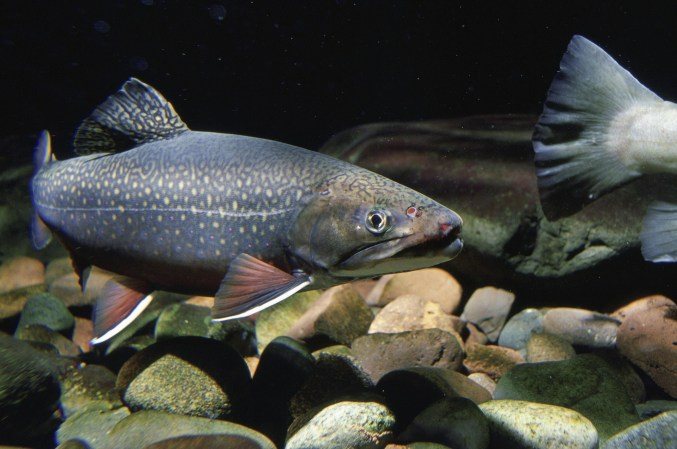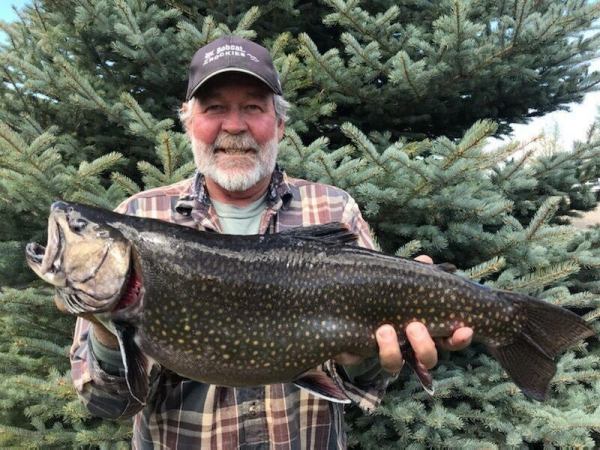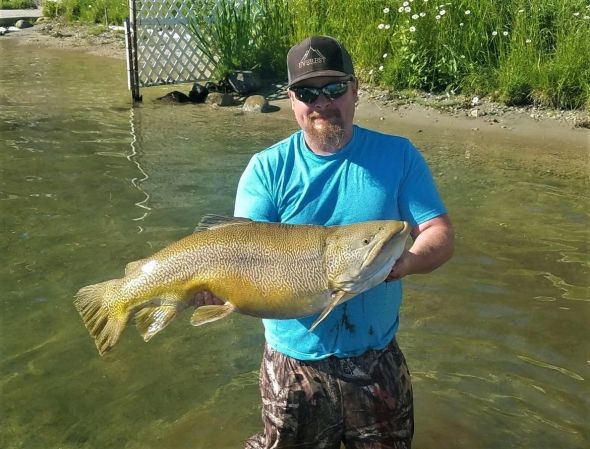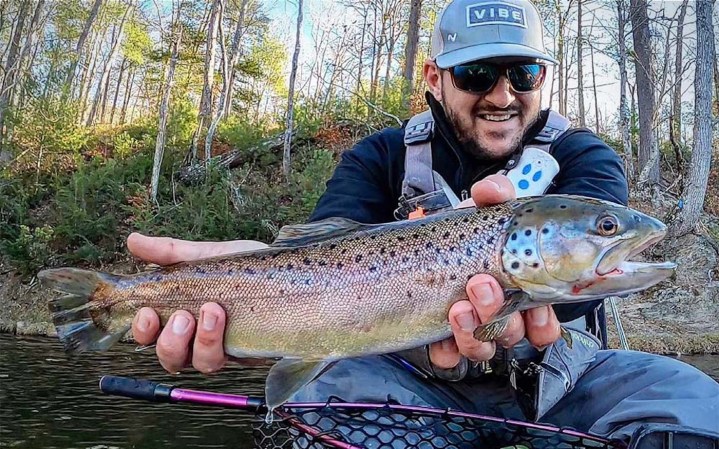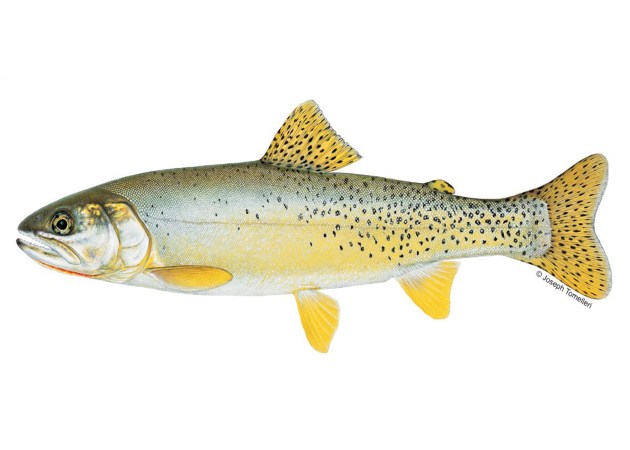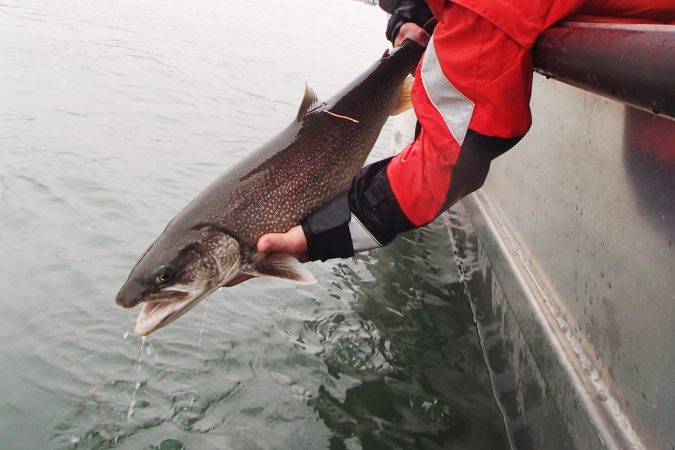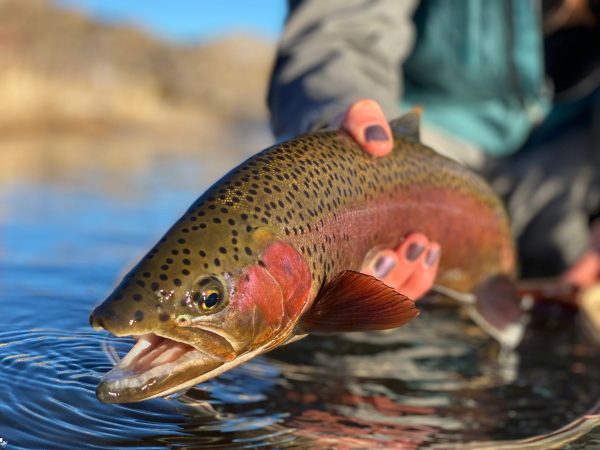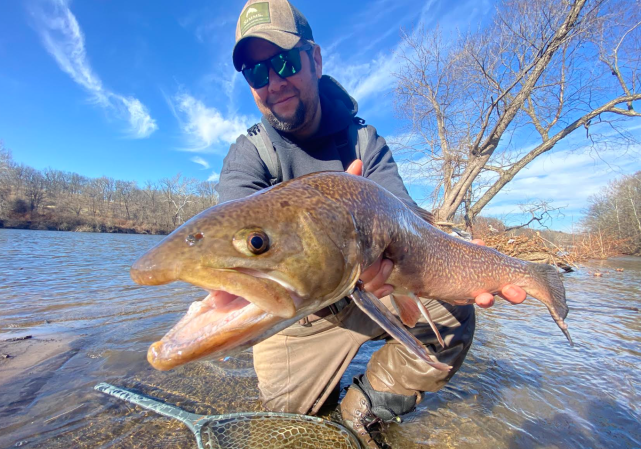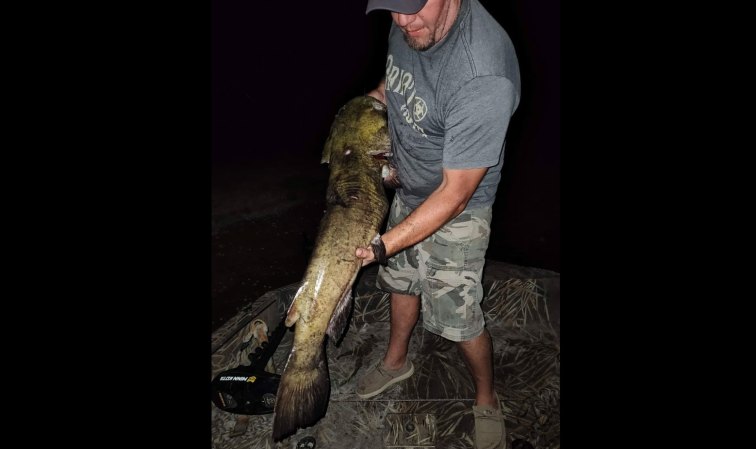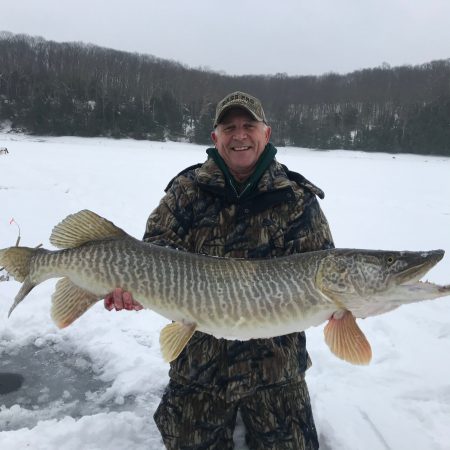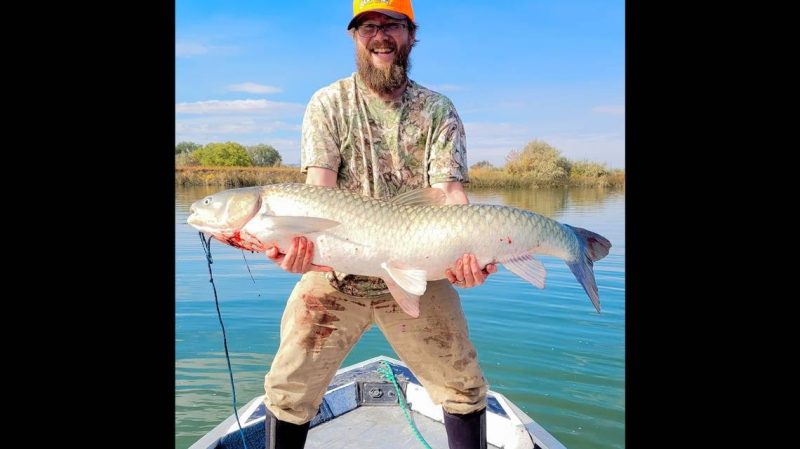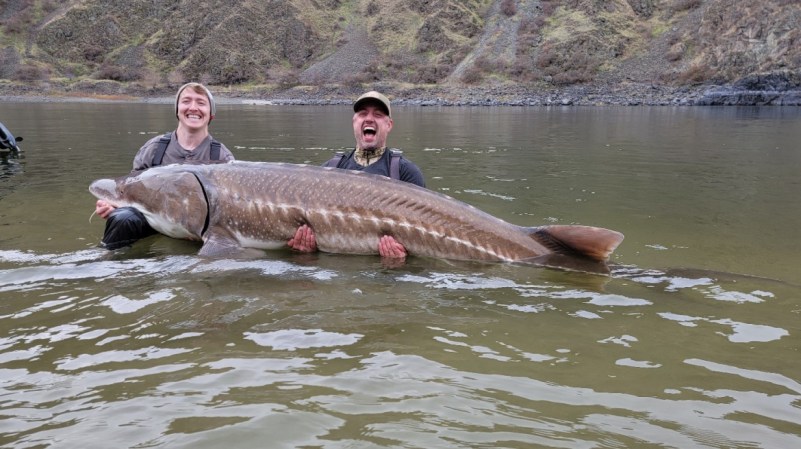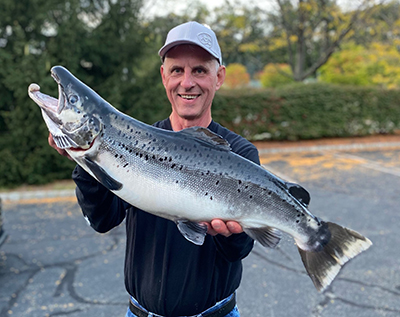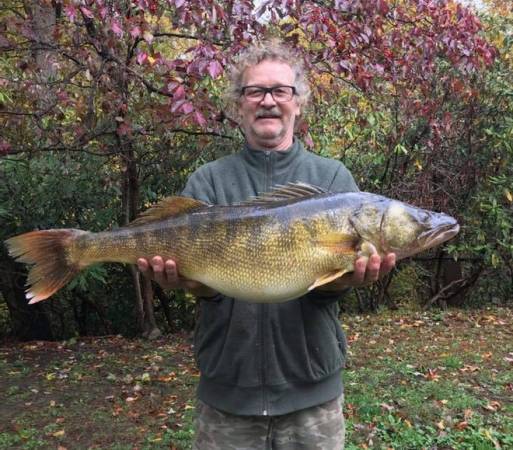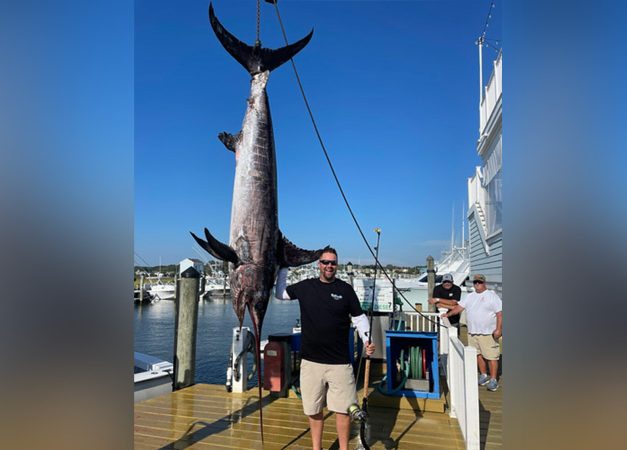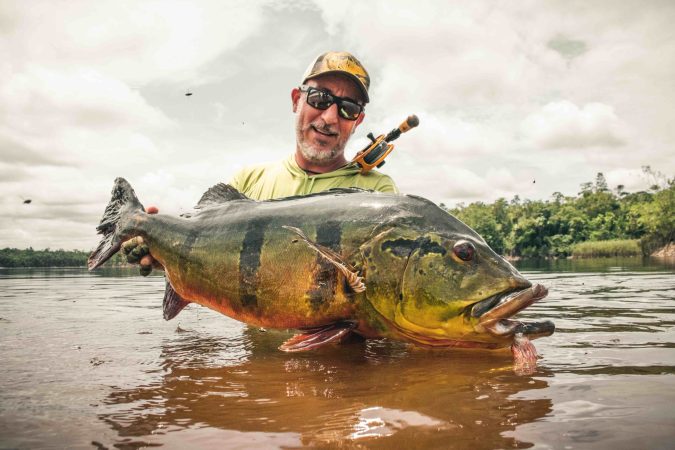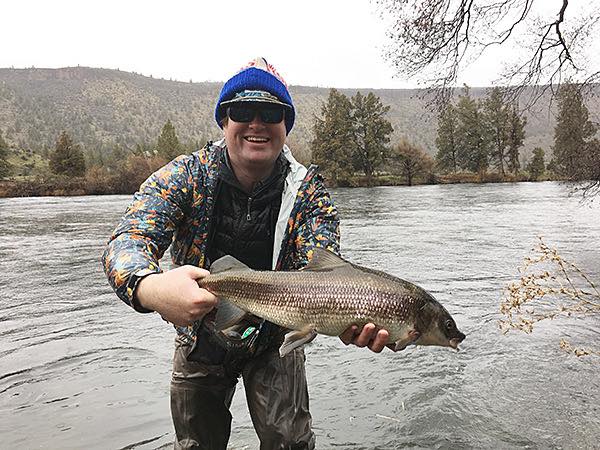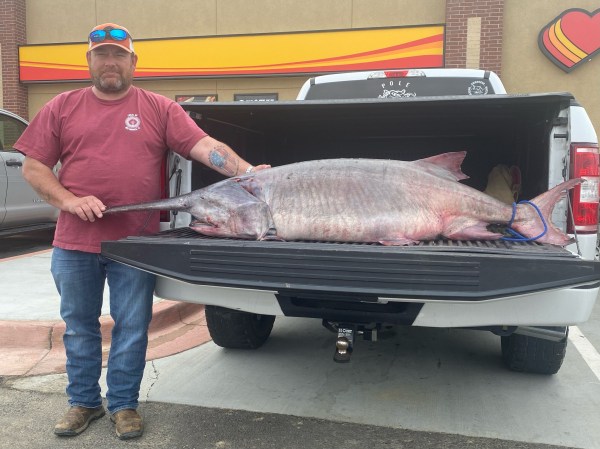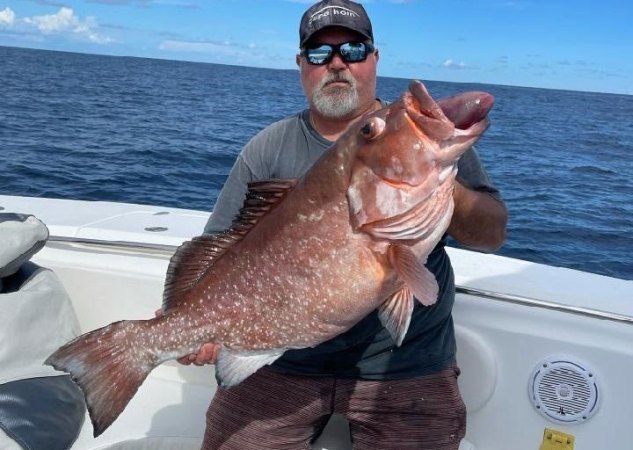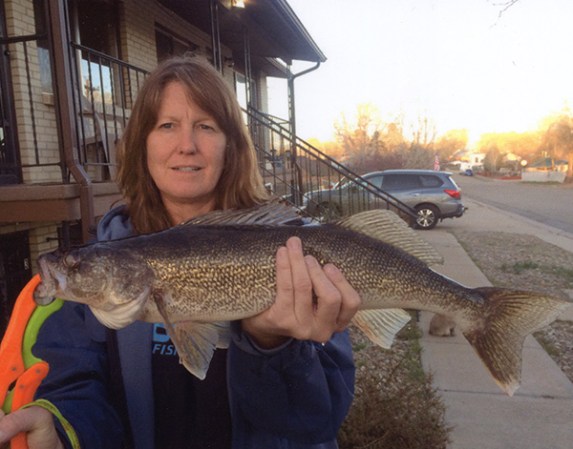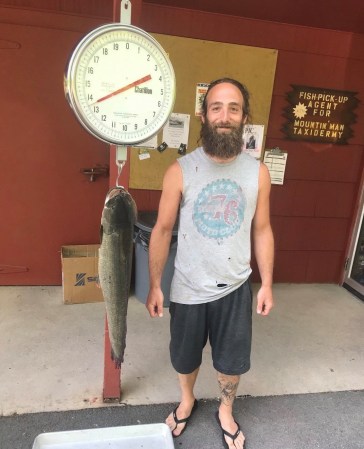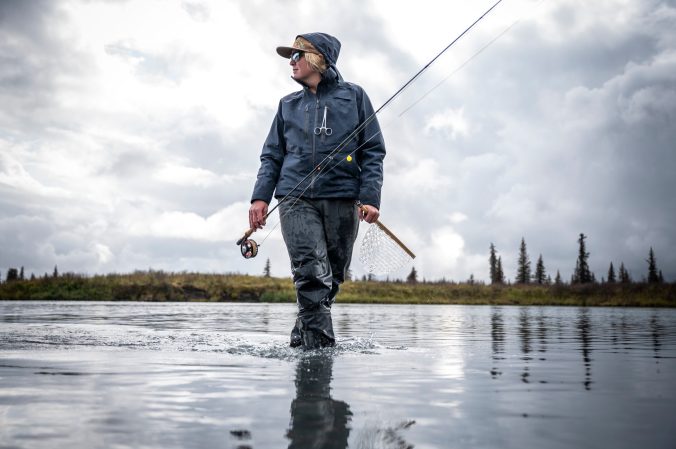It might be a long time before anyone dethrones Idaho’s new certified-weight tiger trout record. That’s because Kody King of Montpelier nearly doubled the standing record with the fish he hauled out of the Montpelier Reservoir on May 30, the Idaho Department of Fish and Game reports.
If King had chosen to enter the fish in Idaho’s catch-and-release category, which is based on length rather than weight, the 29-inch trout would have smashed the current 22-inch record holder, IDFG sport fishing program coordinator Martin Koenig tells Outdoor Life. Instead, King kept the fish and weighed it on a certified scale, which tipped at 8 pounds, 8 ounces. The prior certified-weight tiger trout record weighed 4 pounds, 13 ounces. Gatlynn Mayes caught the 24-inch fish on Becker Pond in Idaho Falls on Dec. 16, 2020, breaking the previous record of 4 pounds, .6 ounces from 2018.
The current International Game Fish Association All-Tackle tiger trout record sits at 27 pounds, 6 ounces. Cathy Clegg caught the fish on Loon Lake in eastern Washington in August 2022.
Tiger Trout in Idaho
IDFG has stocked the Montpelier Reservoir with tiger trout since 2016, which means King’s fish is eight years old at most, Koenig says. The last stocking happened on June 14, 2022, when IDFG released 1,060 fish longer than 6 inches into the 131-acre waterbody. Tiger trout act as a biological control in the reservoir, which was part of the reason for the inception of Idaho’s tiger trout stocking program.
“Being sterile, they give us a little more flexibility because they’re not going to interbreed with native trout local to the area,” Koenig says. “While Montpelier Reservoir is home to native Bonneville cutthroat trout, and then a host of other introduced gamefish like perch, kokanee, and some rainbow trout, we’re not so worried about tiger trout being a nuisance to the system there.”
But they also create a desirable game fishing opportunity for an otherwise-mediocre fishery. Tiger trout have the huge appetites and aggressive behavior characteristic of the two species that create them, Koenig says. This has excited anglers across the state, who seem to largely support the stocking program.
“We can use tiger trout to try to capitalize on those abundant-but-small yellow perch and produce a trophy fishing opportunity in a reservoir that otherwise doesn’t produce a lot of big fish,” he explains. “Anglers love to catch trout that are different and cool. Tiger trout are a super fun sport fish, they’re unique, [and] people are willing to travel pretty long distances to get a chance at catching one.”
All About Tiger Trout
A tiger trout is a sterile hybrid of a female brown trout and a male brook trout. Neither species is native to Idaho—brown trout were introduced from Europe and brook trout came from the eastern United States. Tiger trout are rarely produced in the wild, since they are the offspring of two distinct species. The scarce wild tiger trout is a small, elusive fish while the hatchery-raised tiger is bigger and much more aggressive.
Tiger trout are easy to recognize. The wiggly pattern that covers their bodies is more reminiscent of a composition notebook than a tiger, but it is similar to the pattern that covers the top of a brook trout. Tiger trout might also have the white stripe on their lower fins, similar to the brook trout. But their bellies range from white to an orange-yellow color, characteristic of both the male brook trout and the female brown trout.
Read Next: Why We Love (and Hate) Hybrid Game Fish
Just 35 percent of hatchery-bred specimens survive, and the percentage is even lower for wild specimens, according to IGFA. State wildlife agencies stock tiger trout in ponds, reservoirs, lakes, and streams across the country, from Nevada to Massachusetts.

